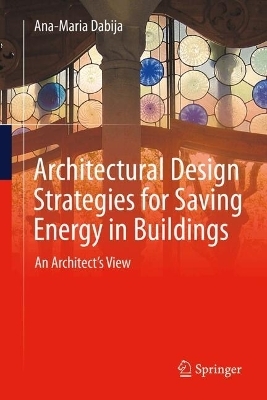
Architectural Design Strategies for Saving Energy in Buildings
Springer International Publishing (Verlag)
978-3-031-73540-0 (ISBN)
Architectural Design Strategies for Saving Energy in Buildings: An Architect's View employs an architect's perspective, defined equally as art and engineering science, to the contemporary concept of designing buildings that use less energy. This approach to lowering energy consumption via integrated measures (both passive and active) offers a nuanced perspective on managing building efficiency - that energy saving is not a target in itself but results as a consequence of the architectural concept. The book does not provide calculations or levels of performance. Rather, by sticking to qualitative principles of architectural design and analyzing and using the force and laws of nature in shaping the built space, the author argues for decreasing energy consumption through the process of design, the principles of building physics, the volume of the building itself, and spatial configuration as it relates to the costs of operating the building. This approach contrasts the traditional construction system of only providing a thermal insulated "blanket" over the envelope and equipment that produces energy from unconventional sources, which can be calculated according to regulations.
Amidst the current discourse on sustainability and energy efficiency, this book offers a thought-provoking read for professionals in architecture, civil engineering, and construction, as well as graduate students in related courses. It presents an architect's approach to nearly zero-emission building design, analyses architectural strategies that efficiently use energy in buildings, and examines famous buildings and their innovative design as examples of good practice.
Prof. Dr. Ana-Maria Dabija has been an architect since 1986. She worked for a design institute and a private company before pursuing a university career with the "Ion Mincu" University of Architecture and Urbanism in Bucharest. She received her Doctoral Degree in 2000 and has been a doctoral tutor since 2008. Until her retirement, in 2023, Dr. Dabija held several positions in the hierarchy of the "Ion Mincu" University: Vice-rector for Innovation and Research, Director of the Center of Architectural and Urban Studies, and Director of the Architecture Doctoral School of the "Ion Mincu" University. For over 30 years, her scientific interest was on construction principles, sustainable architecture, the relation between architectural design and energy efficiency in buildings. Some of the many architecture courses she has developed include "Architectural Detailing Principles," "Contemporary Technological Products and Sub-Assemblies" and "Mistakes in Design - Execution - Use." She is the author of the book Alternative Envelope Components for Energy-Efficient Buildings (Springer, 2021) and editor of Energy Efficient Building Design (Springer, 2020). Dr. Dabija has taken part in more than 60 international conferences (with papers published in the proceedings) and has coordinated technical regulations and scientific research. She is a member of the Commission of Renewable Energies of the Romanian Academy, a corresponding member of the Technical Sciences Academy of Romania, and a member of numerous national and international professional and scientific bodies and technical committees.
Chapter 1 Introduction.- Chapter 2 Energy and construction policies in the past fifty years.- Chapter 3 From symbolic and sacred to economic and efficient - Circular economy and the buildings.- Chapter 4 Architectural means and tools for providing indoor air comfort - A historic perspective.- Chapter 5 From yesterday towards tomorrow.
| Erscheinungsdatum | 14.11.2024 |
|---|---|
| Zusatzinfo | XVI, 159 p. 93 illus., 80 illus. in color. |
| Verlagsort | Cham |
| Sprache | englisch |
| Maße | 155 x 235 mm |
| Themenwelt | Technik ► Architektur |
| Technik ► Bauwesen | |
| Technik ► Elektrotechnik / Energietechnik | |
| Schlagworte | Active Building Systems • Bioclimatic Design • building integrated photovoltaics (BIPV) • Building Sustainability • Building Ventilation • energy efficiency • Energy-Efficient Building Design • Green Architecture • nZEB • Passive Architectural Design • Solar Architecture |
| ISBN-10 | 3-031-73540-4 / 3031735404 |
| ISBN-13 | 978-3-031-73540-0 / 9783031735400 |
| Zustand | Neuware |
| Informationen gemäß Produktsicherheitsverordnung (GPSR) | |
| Haben Sie eine Frage zum Produkt? |
aus dem Bereich


